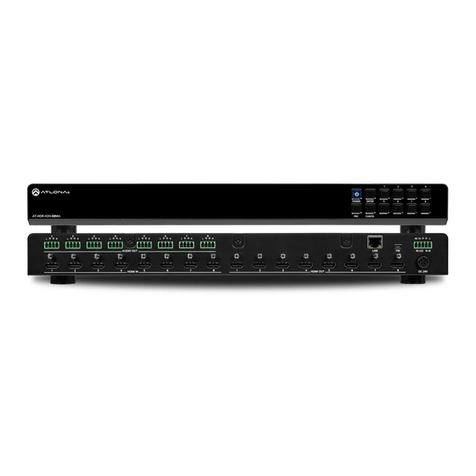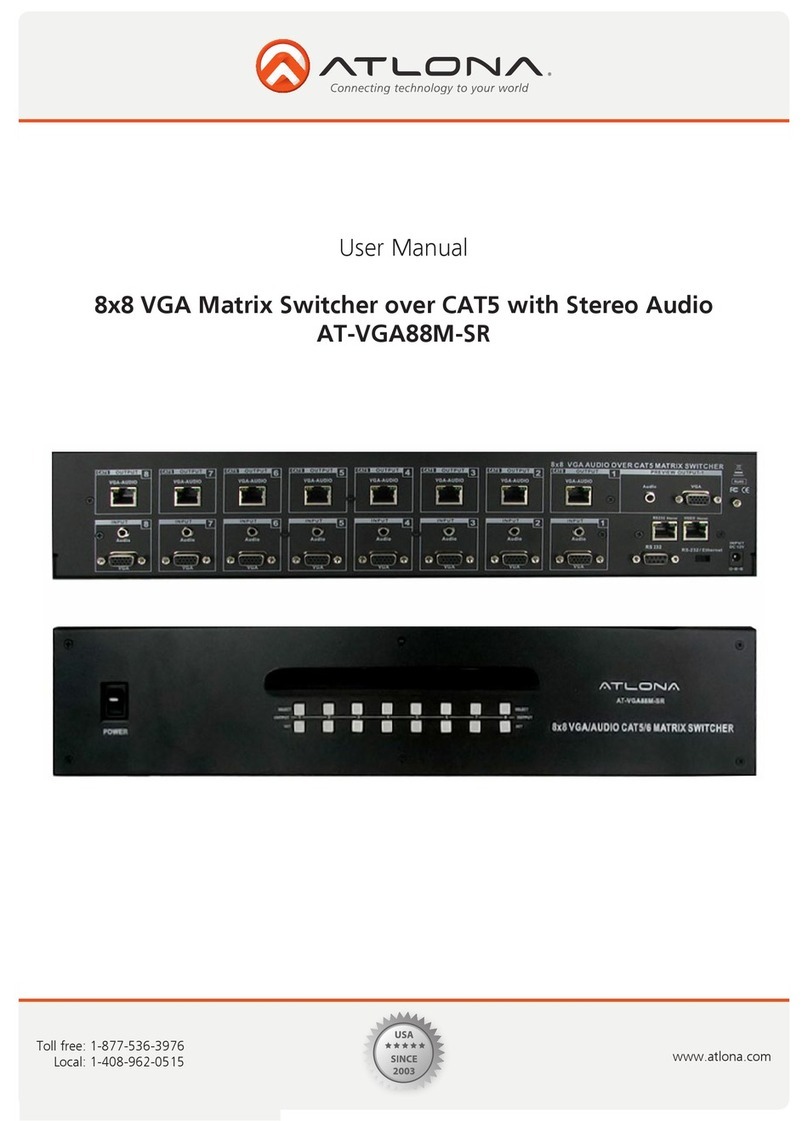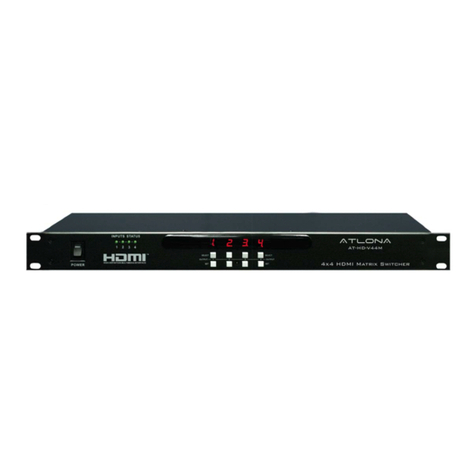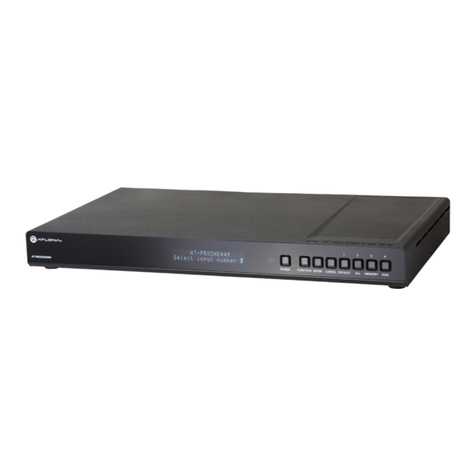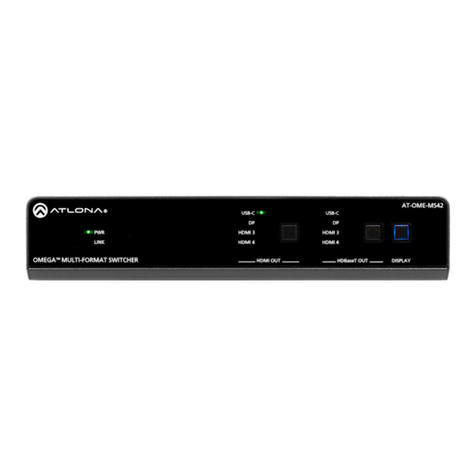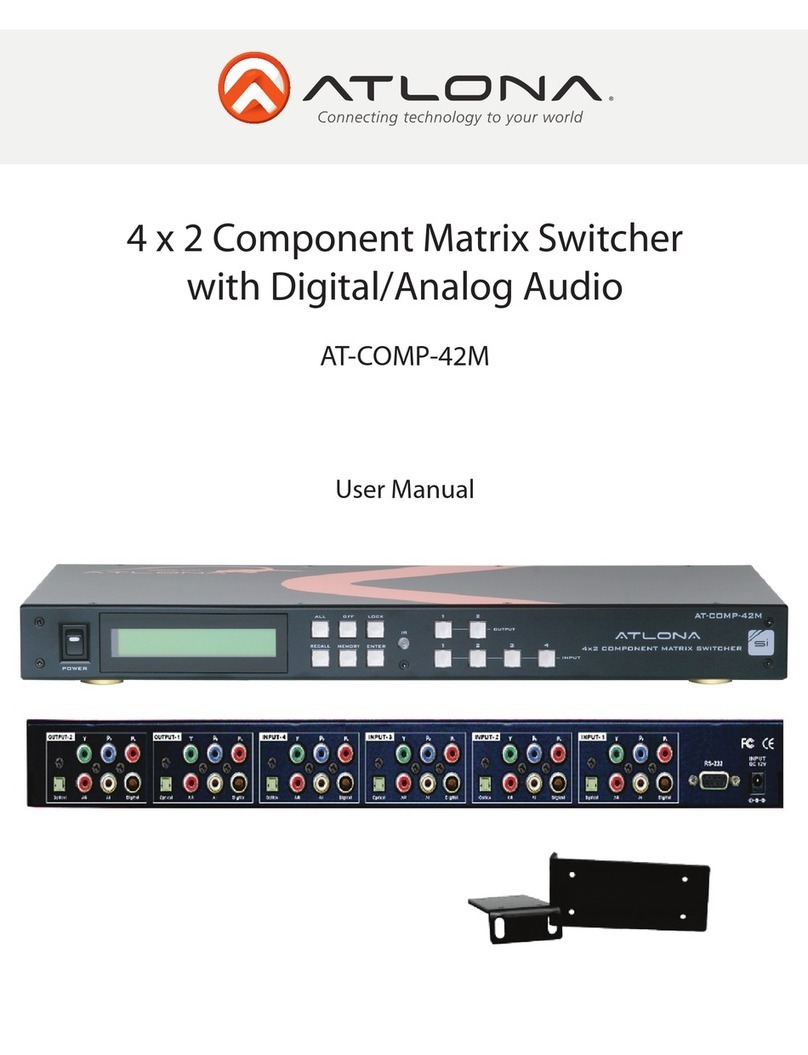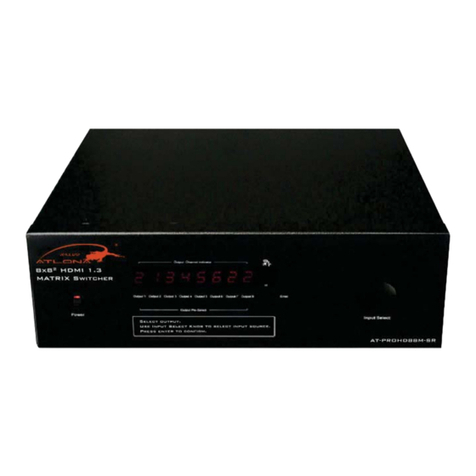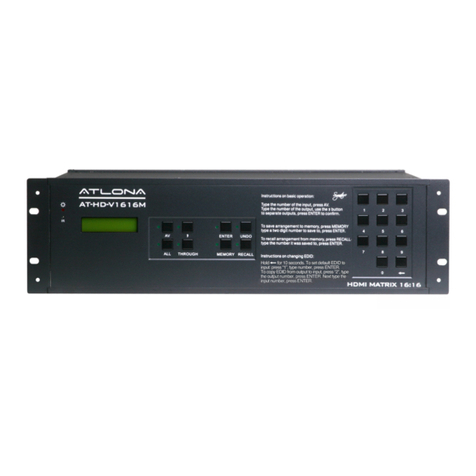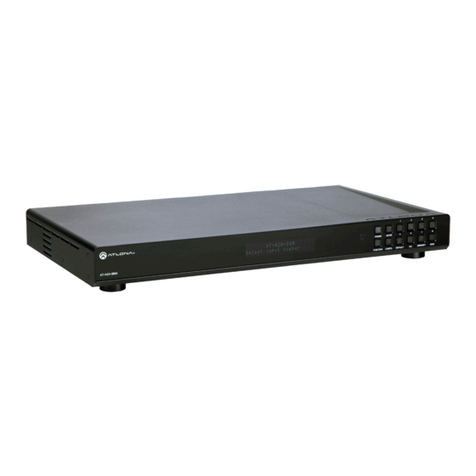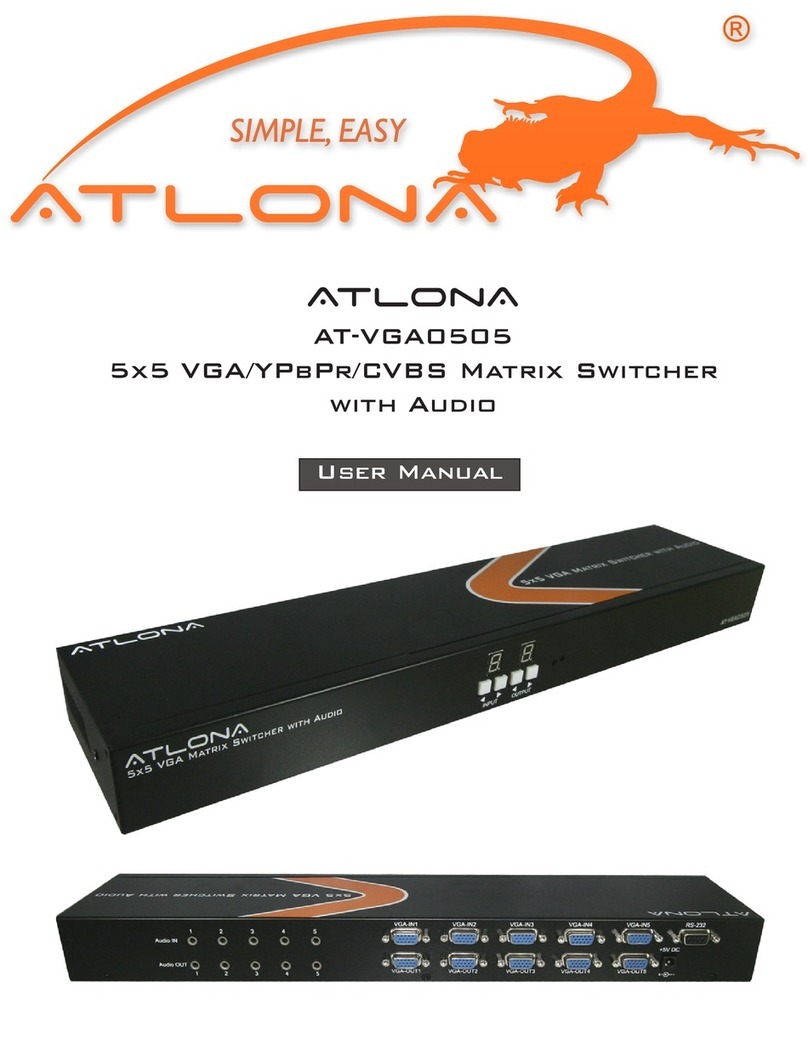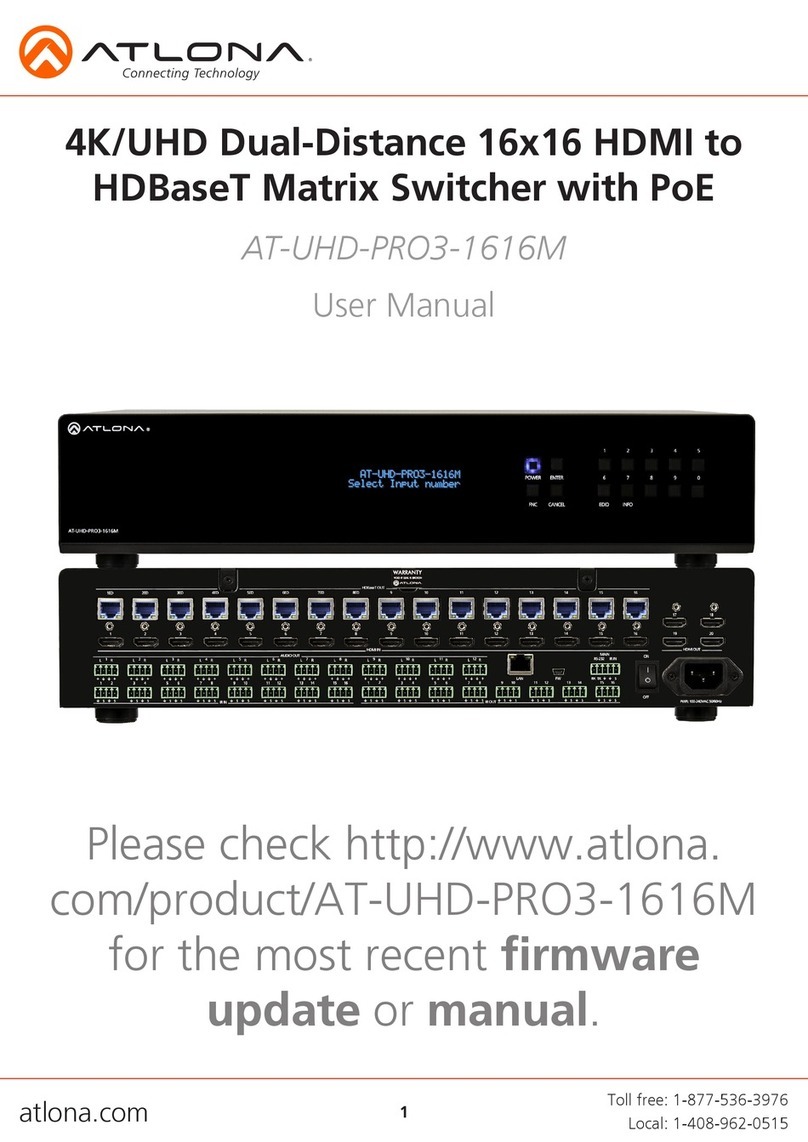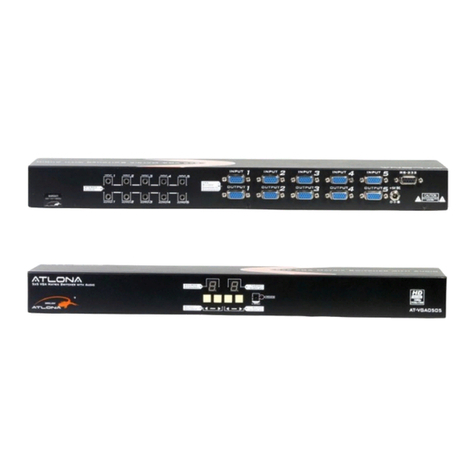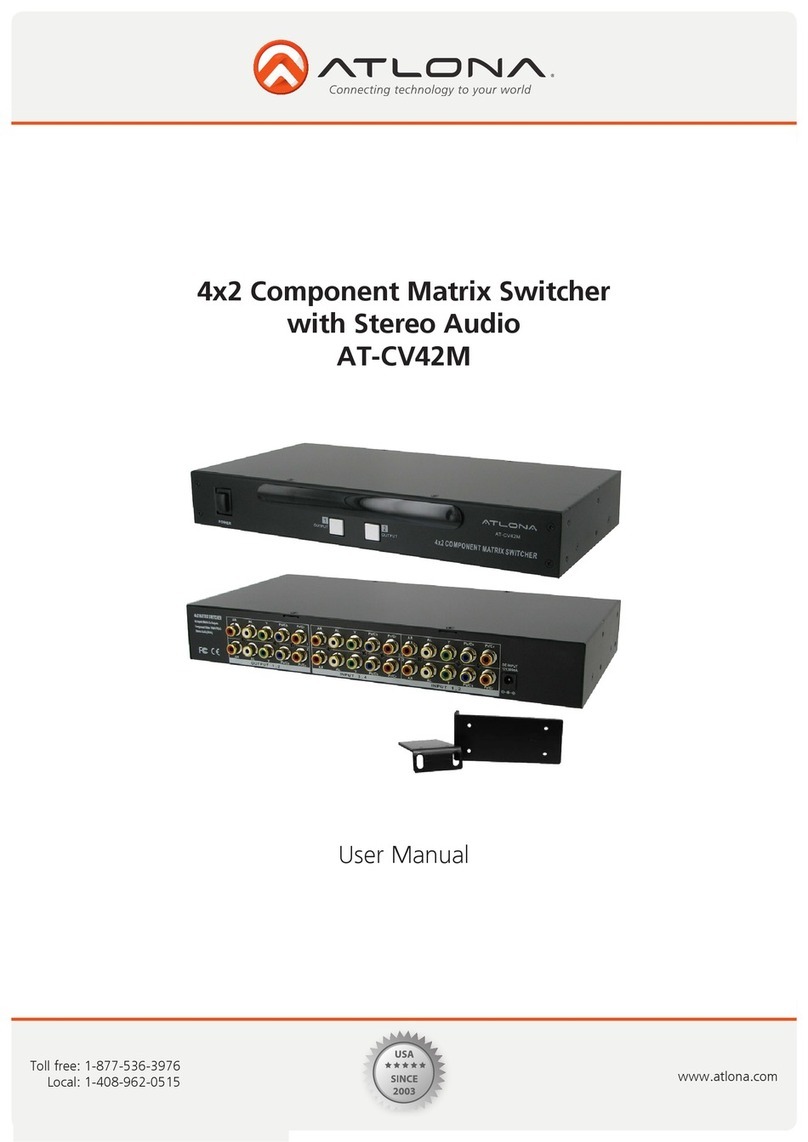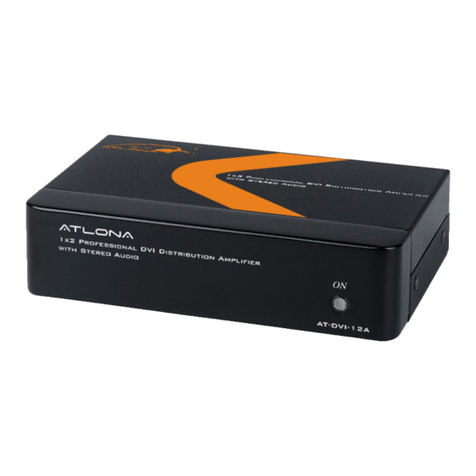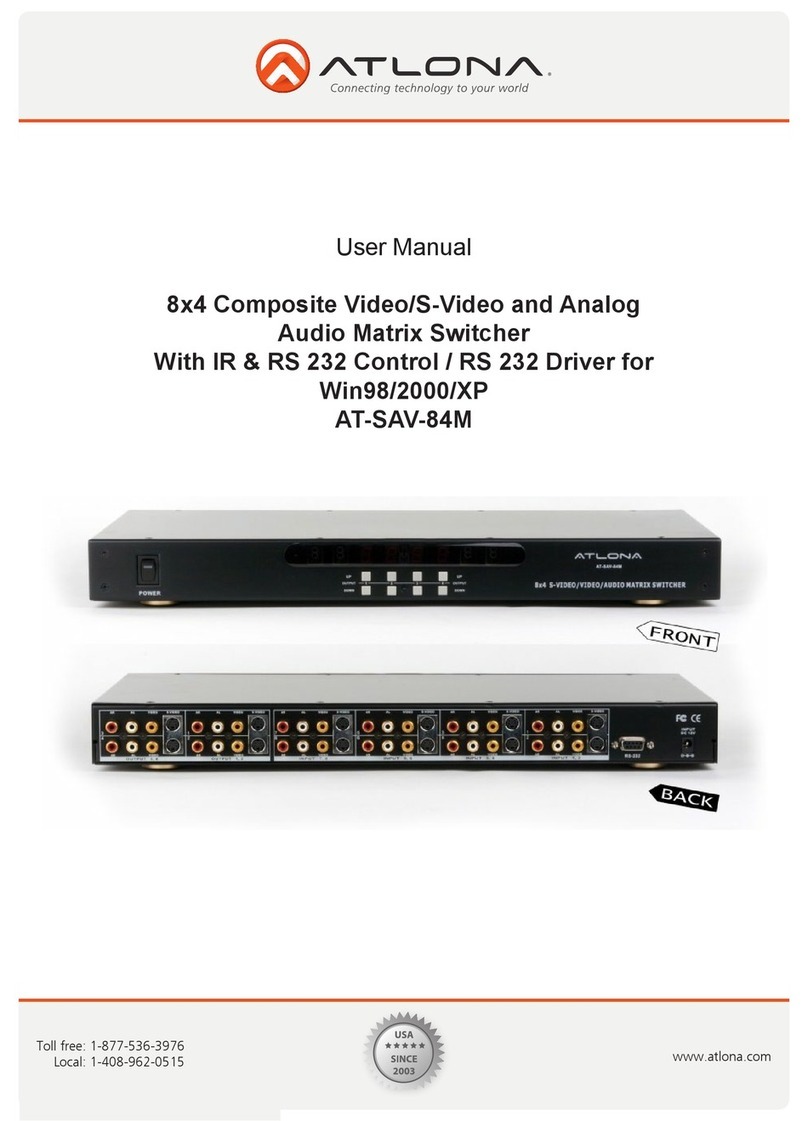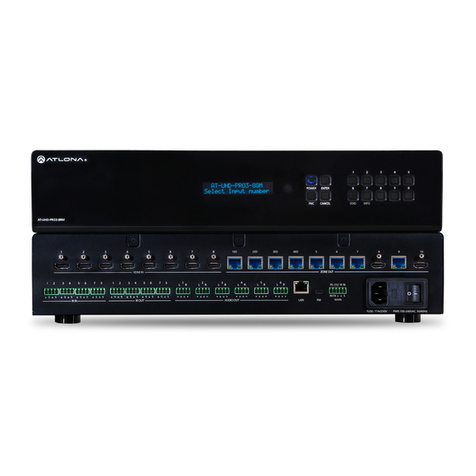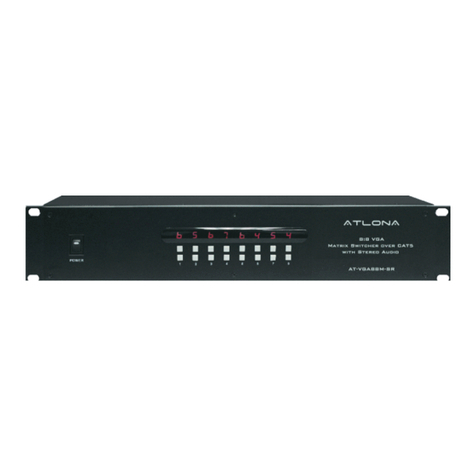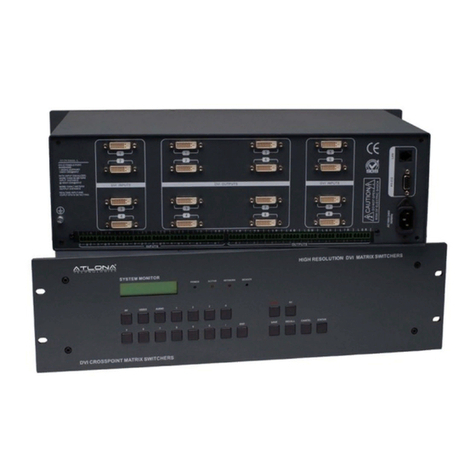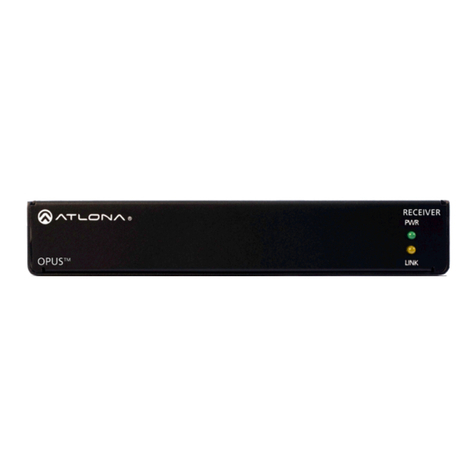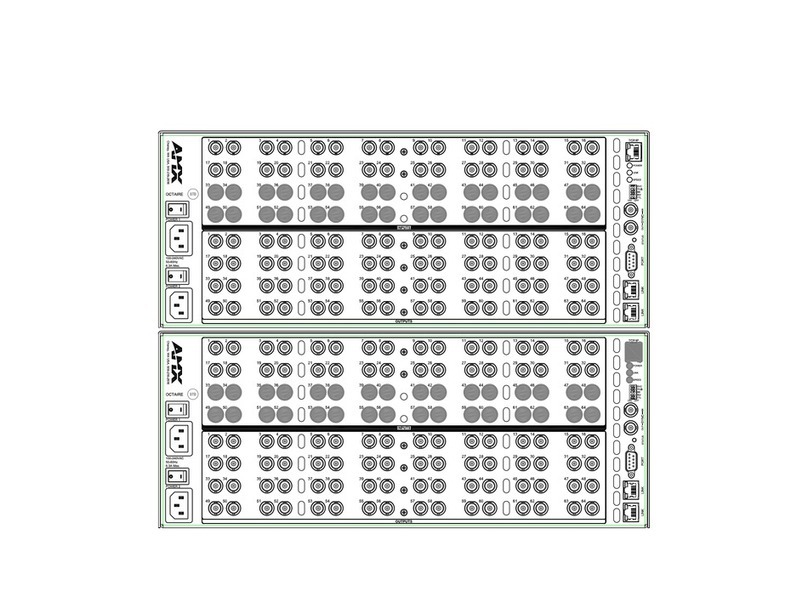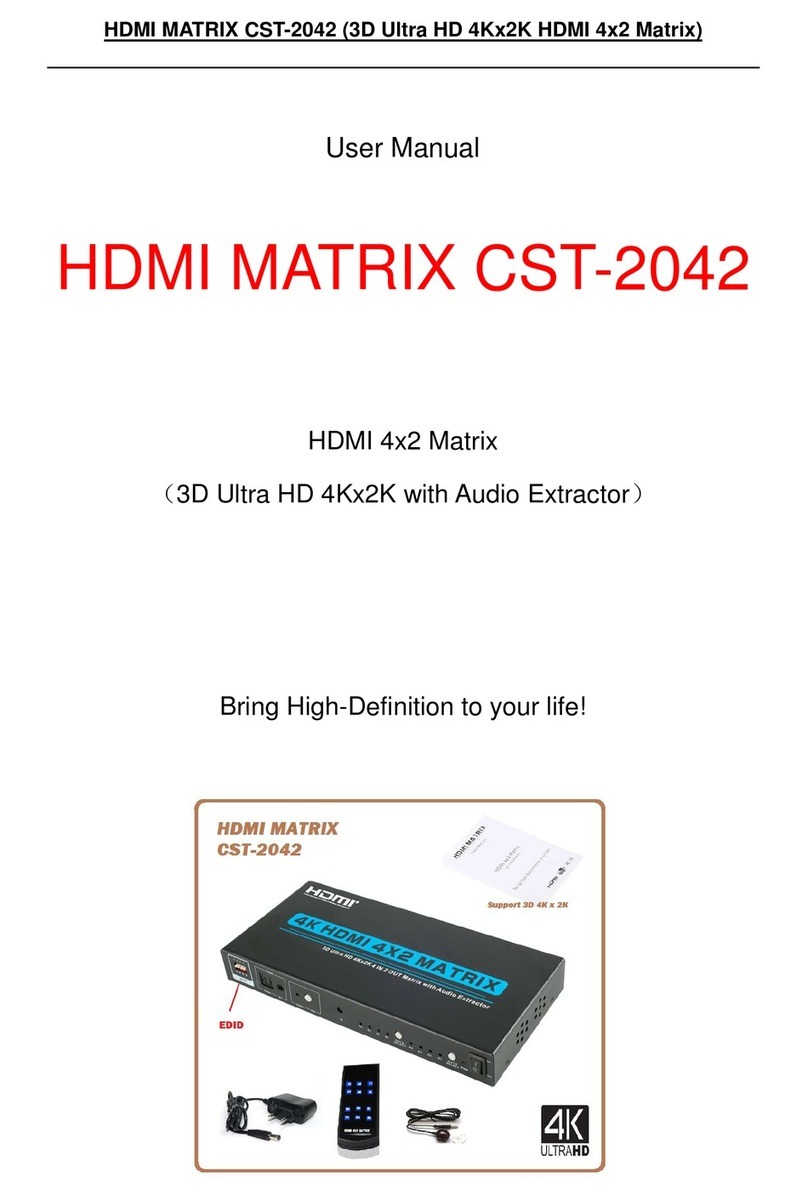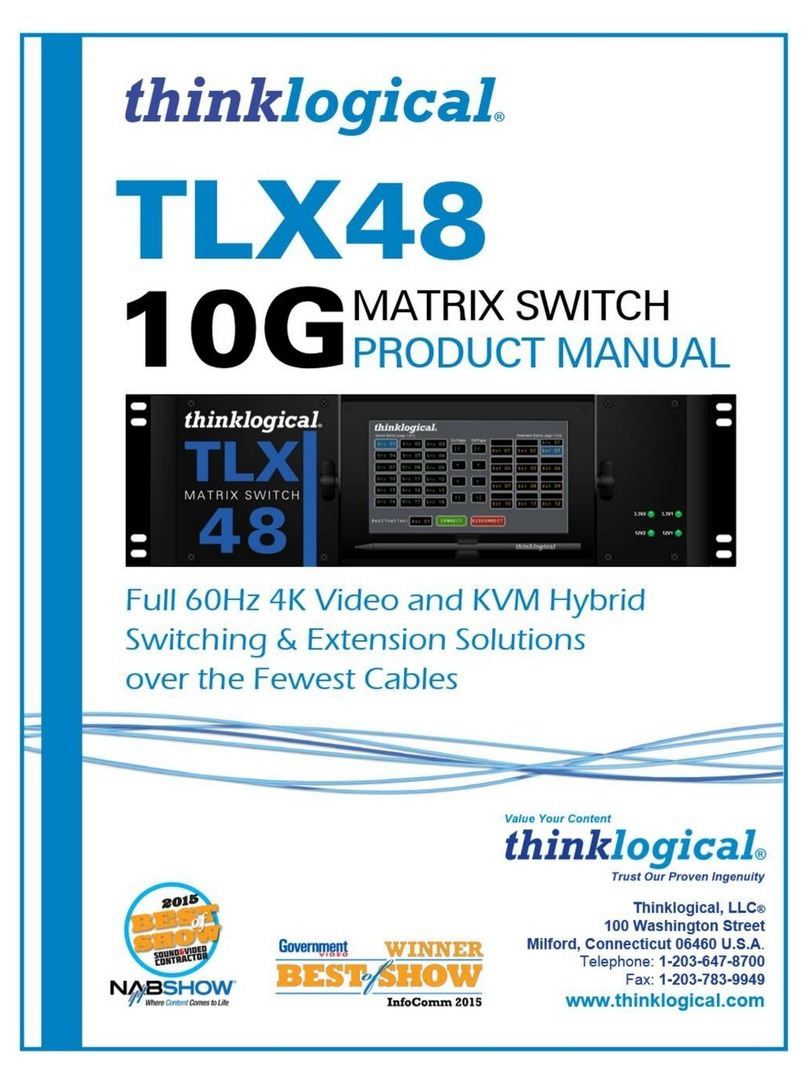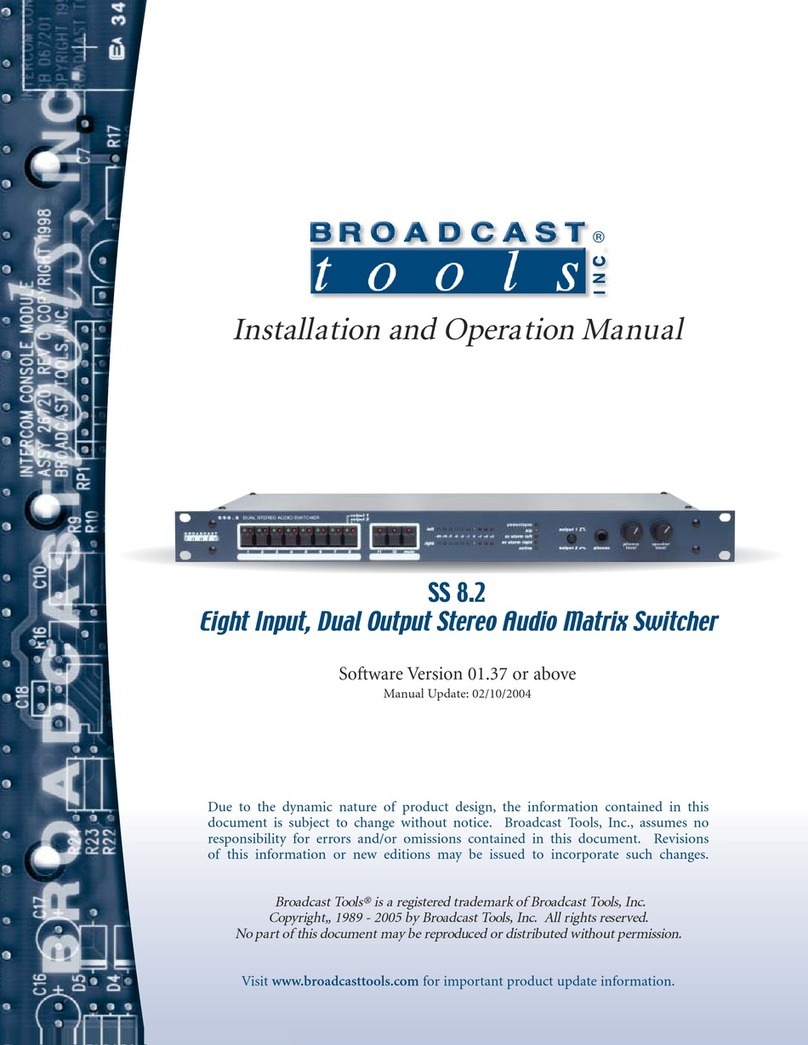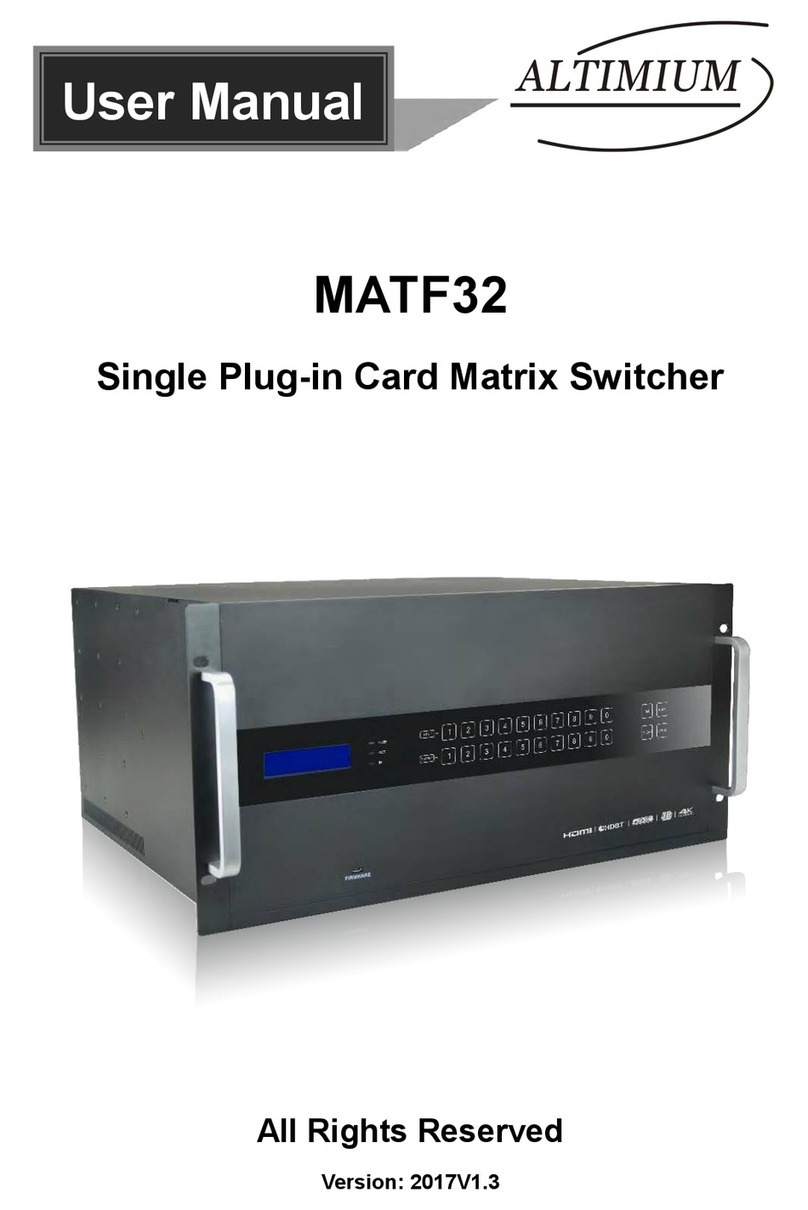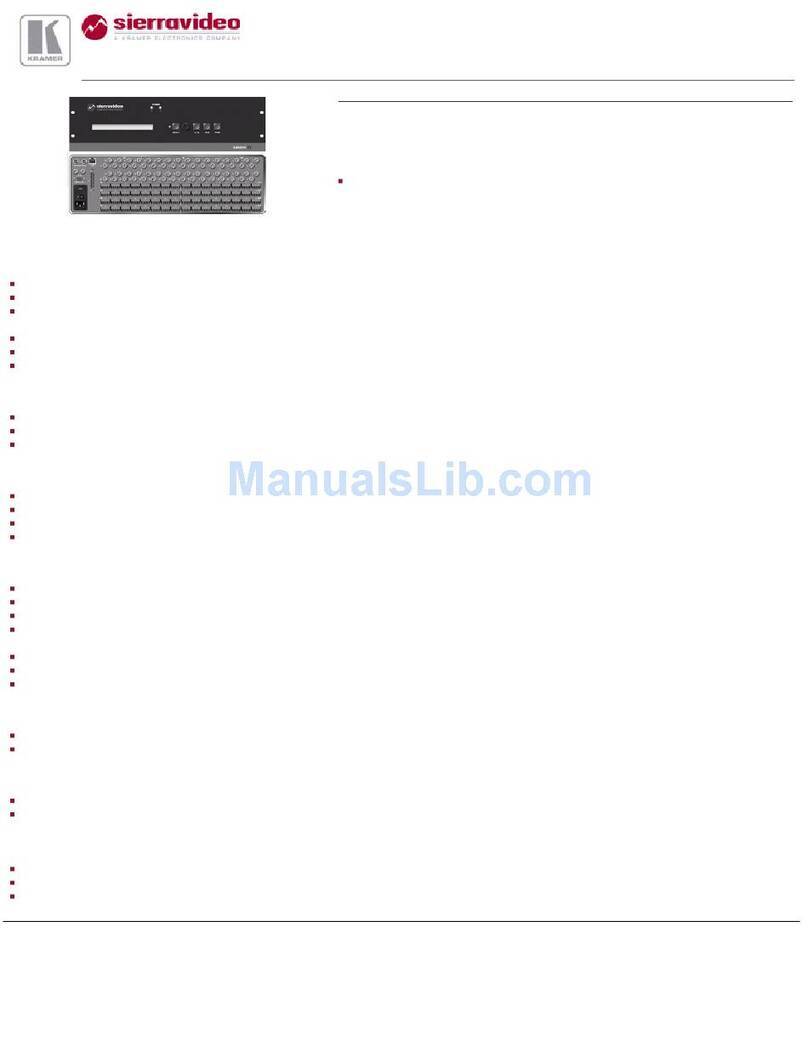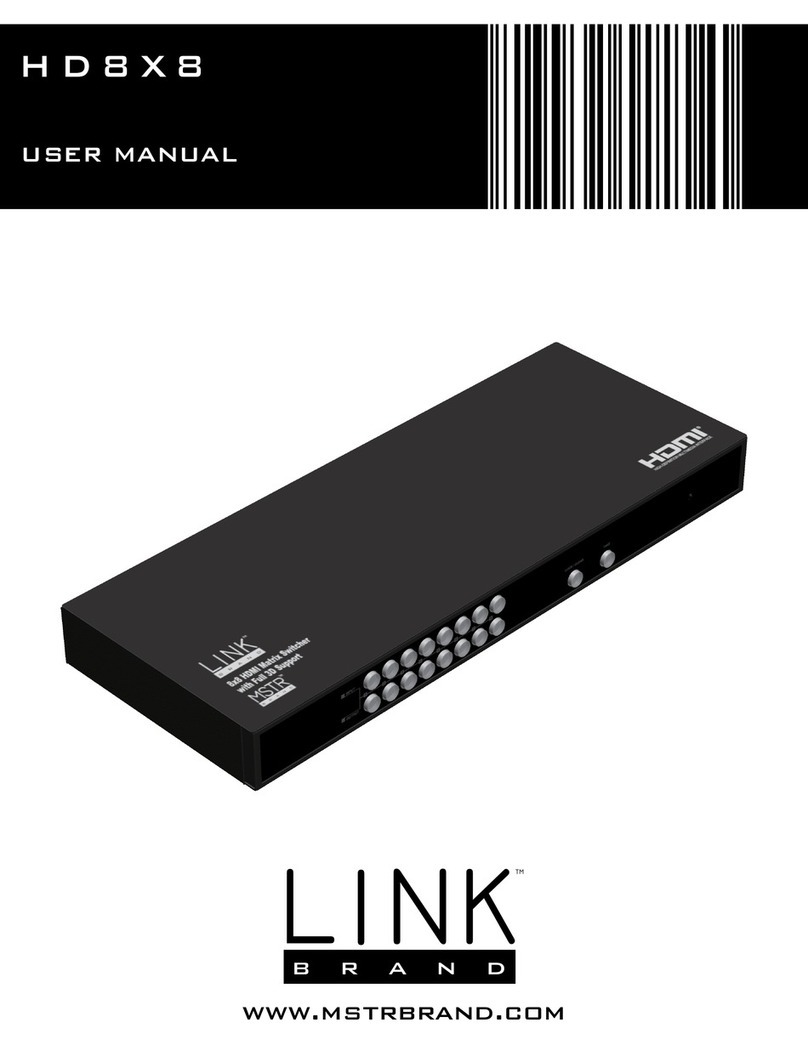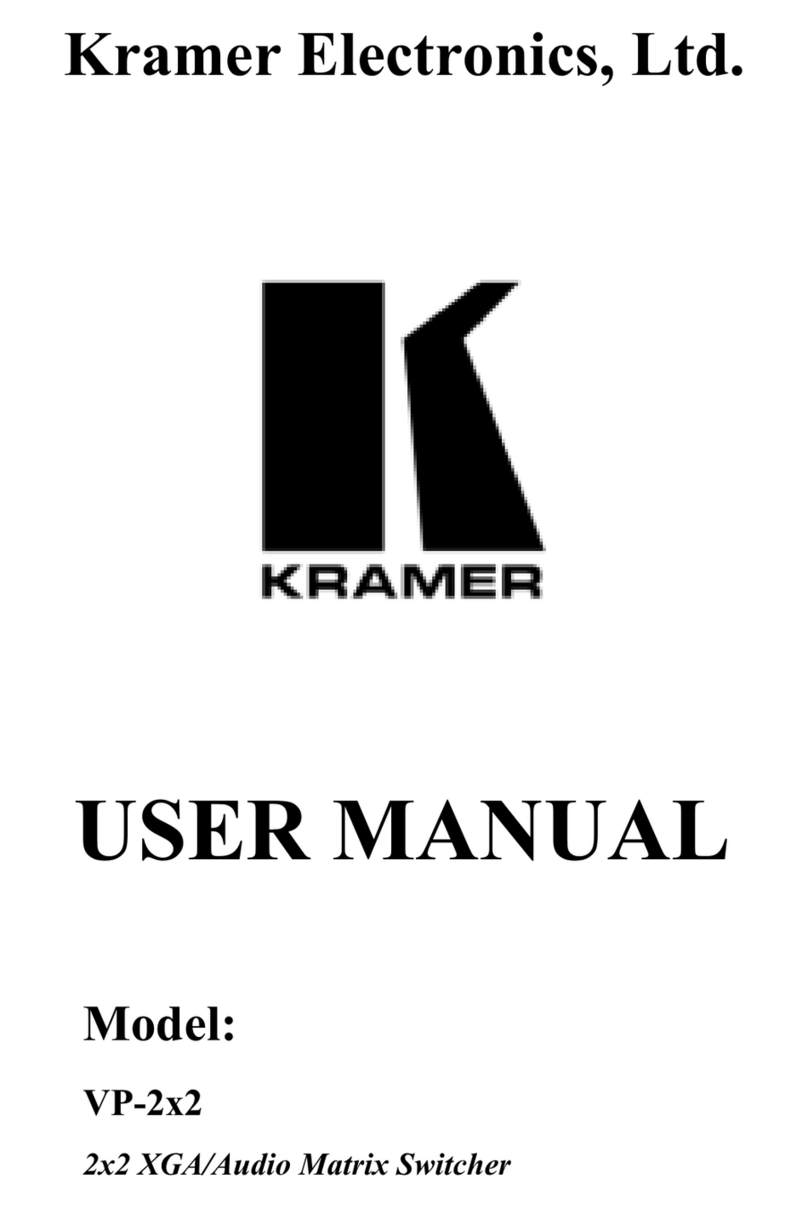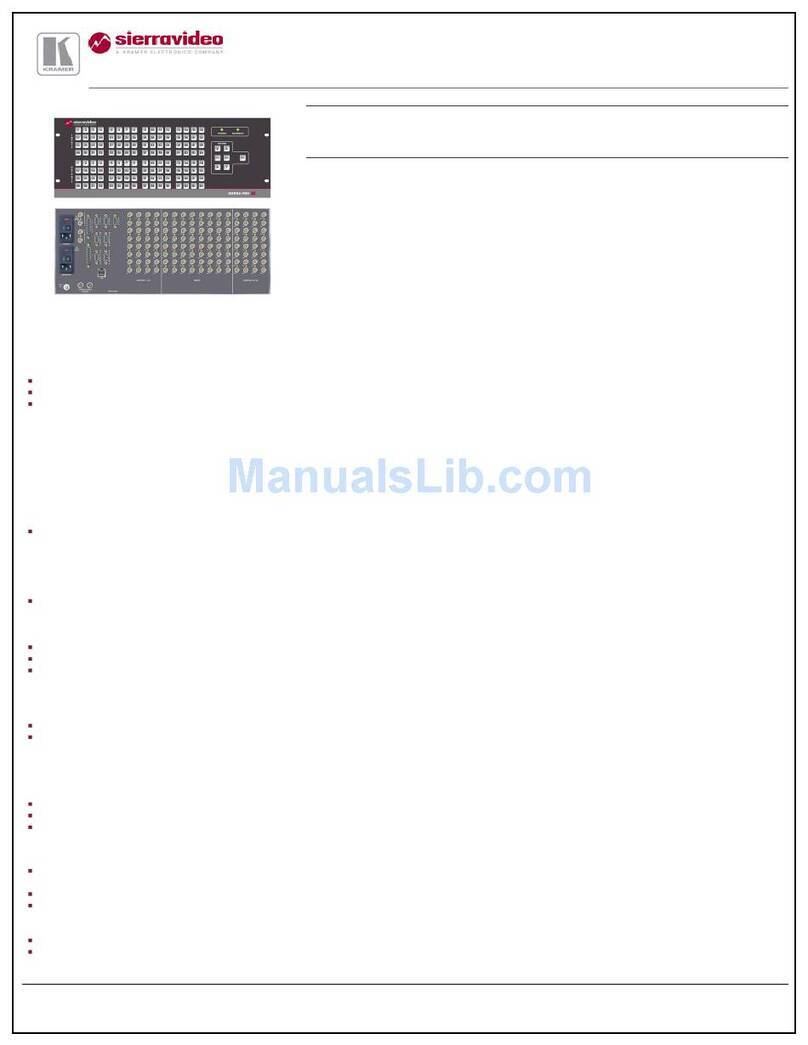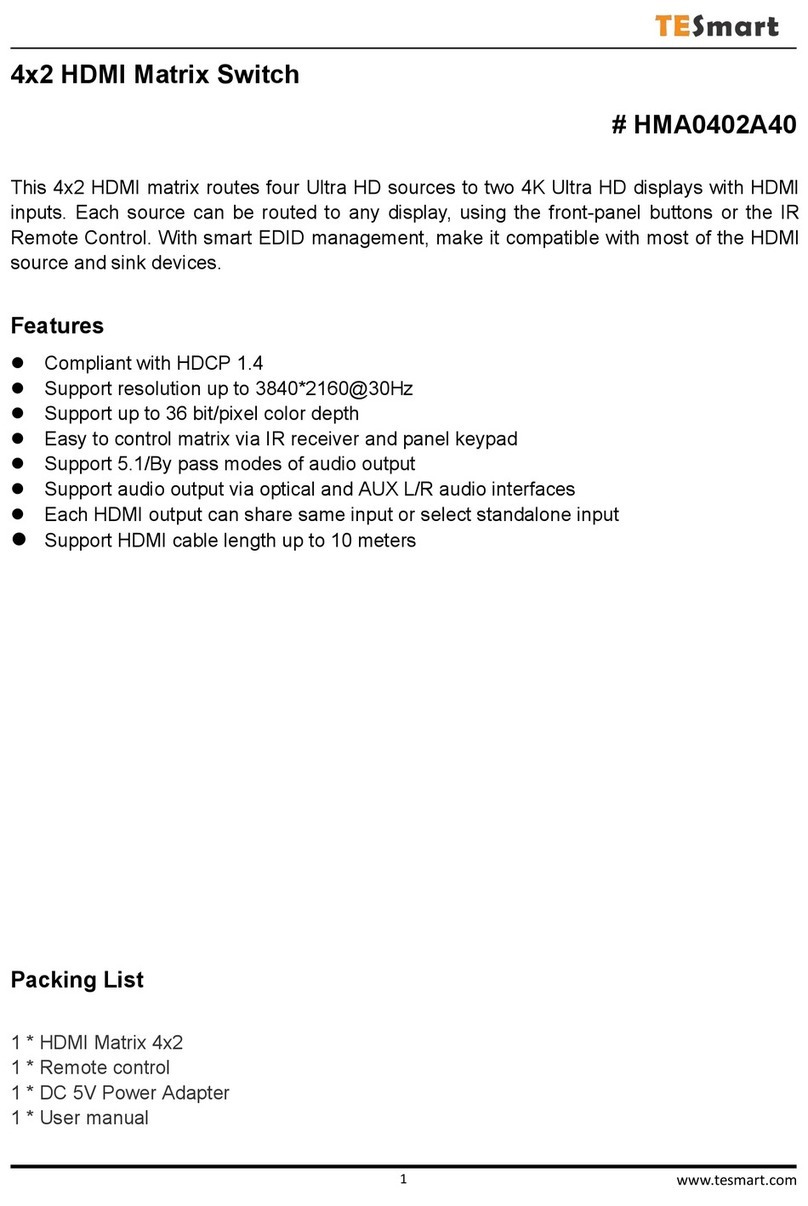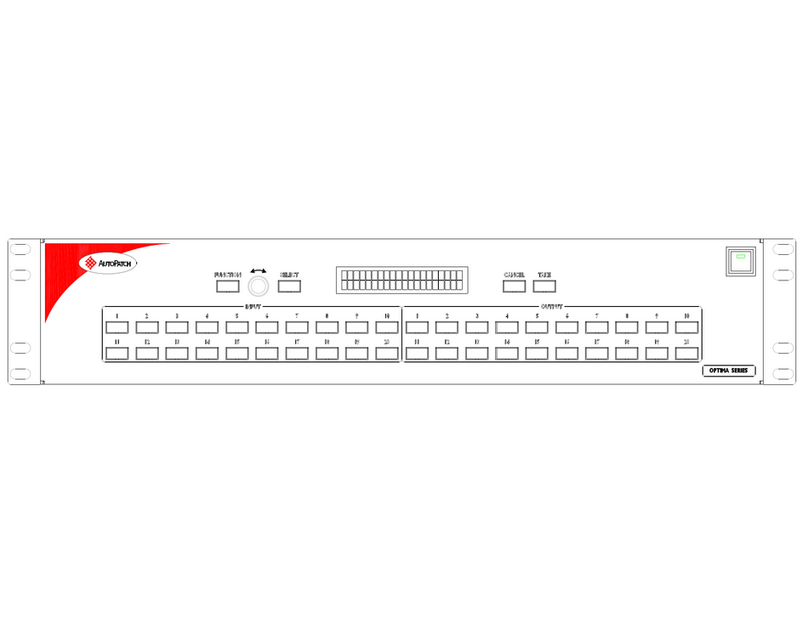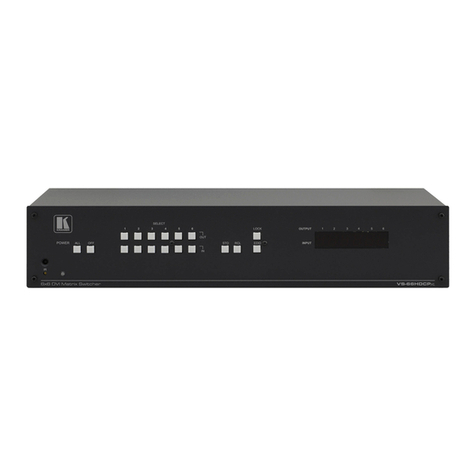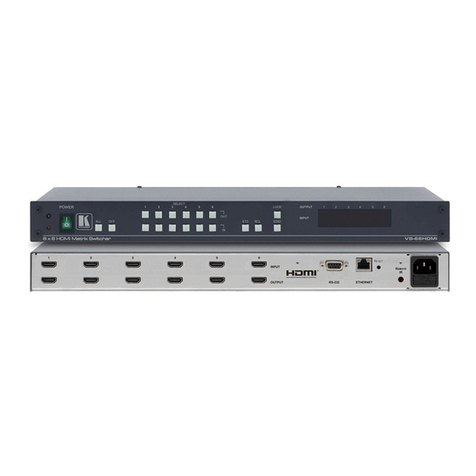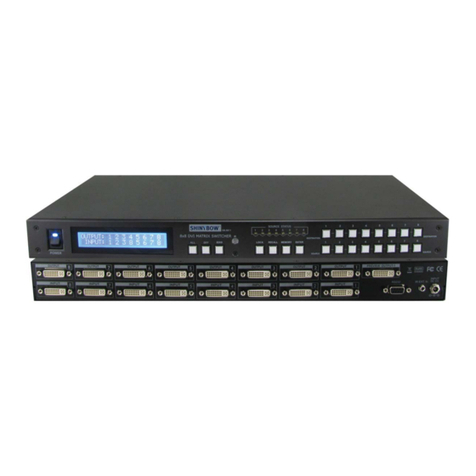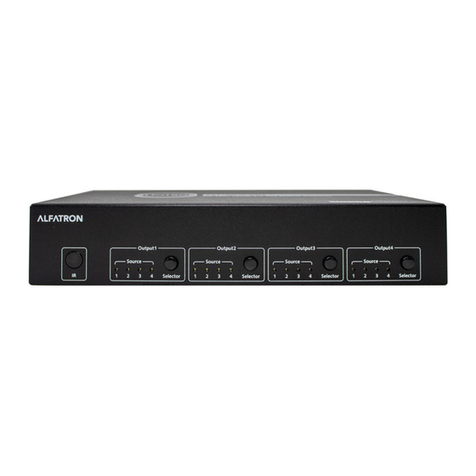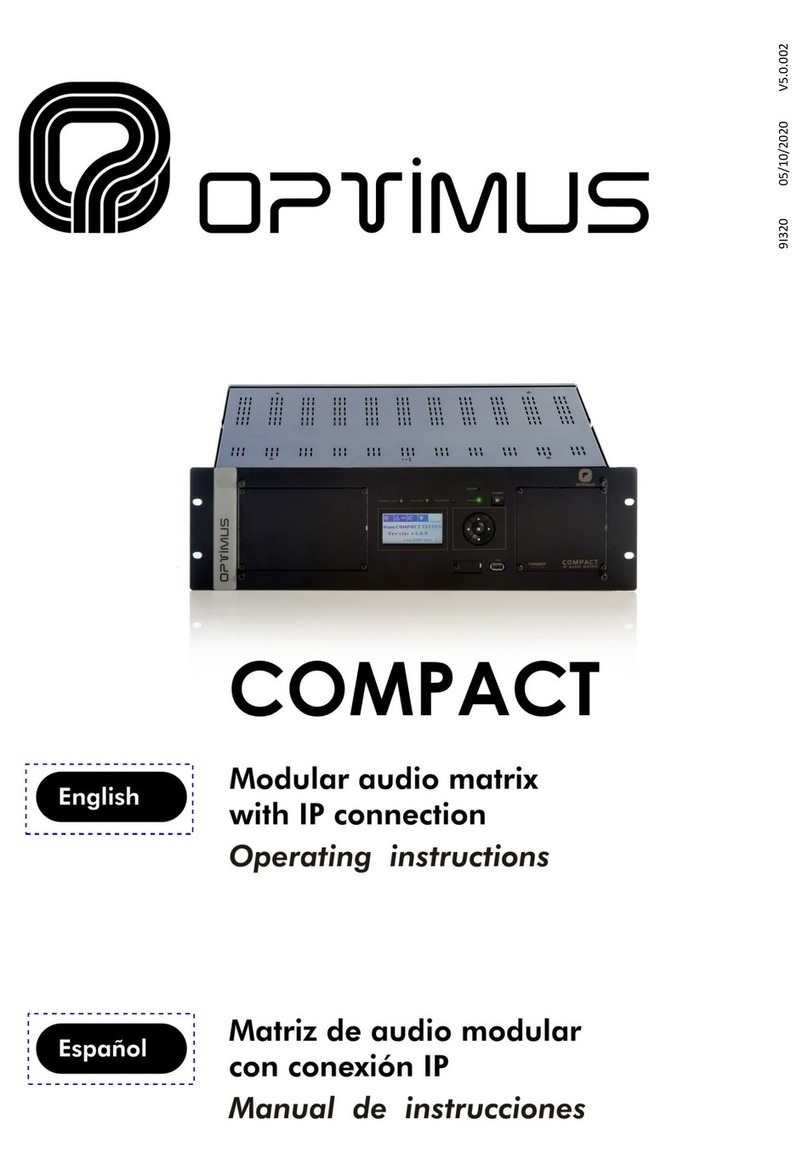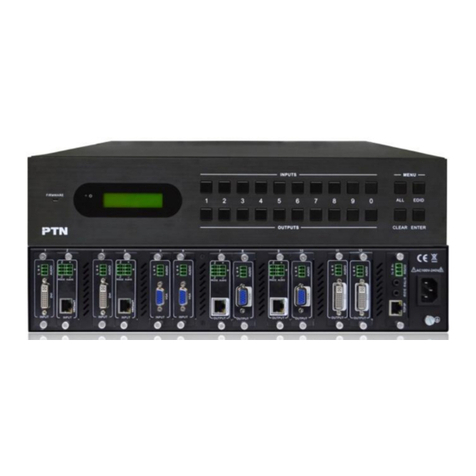
output source from E to H. If the first detected output source is DVI, it will pass along
to the next source, until the first HDMI is detected. The detection priority is HDMI
v1.3 > HDMI v1.2 > DVI. 2. When the EDID is on STD, the device will use the built-in
EDID Video Supports < 1080p 10 bits (max) Audio Supports = PCM2
When any of our HDMI/DVI distribution amplifiers are powered on, they will automatically
go through an Identification cycle, which means that each output will send an EDID call
back request to each one of the display. Once that done, the distribution amplifier will
identify the data received and choose the most appropriate EDID setting. The EDID setting
chosen will be compatible with all the displays.
The reason why we manage EDID the way we do is because we want to make sure that user
will always get signal.
If customer does want to send higher resolution to all the displays which are 1080p and
lower resolution to the 720p display, we do offer a up/down scaler box which would be able
to scale 1080p down to whatever the TV’s native resolution is.
When it comes to our larger matrix switchers, starting at 4x8, we allow users to choose the
EDID. User can even choose 1080p and 7.1 Channel Audio, even though some displays may
not be compatible. In this case no audio or video will appear on the displays that can’t
support it; however since it is a matrix switch some inputs not always have to be selected
and therefore the EDID settings are the way they are.
7. HDCP KEYS
AT-HD-V88M is capable of multiplying the HDCP key to as many outputs as needed,
therefore even your source is only able to output 1 x HDCP, the Atlona box will still be able
to display the image on 8 displays. This is a very commonly asked question. How do we
manage HDCP? Well, a lot of companies do it differently. Some companies use the HDCP
keys from sources and pass them over to displays; however this method would be the
simplest because there is no software is required, but in the same time most sources have
very limited amount of keys. For example if cable box only has one key than only one
display can show the signal. Atlona does it differently, we use one key and copy that key to
all the outputs (decryption/encryption is being done by Silicon Image chip-sets and
therefore we don’t see it). This allows user to use a sources with any amount of key’s even
one and display it on as many as 380 displays at the same time.
The way Atlona does it requires a lot of software writing and it is a very hard way of doing it;
however we think that it is very important that user is capable of viewing as many displays
as needed and not limited to capabilities of the sources.
8. UPC/APS BACK UPS
